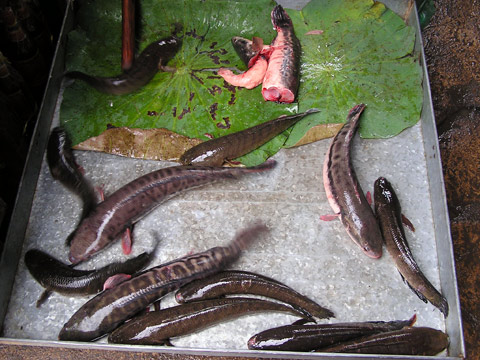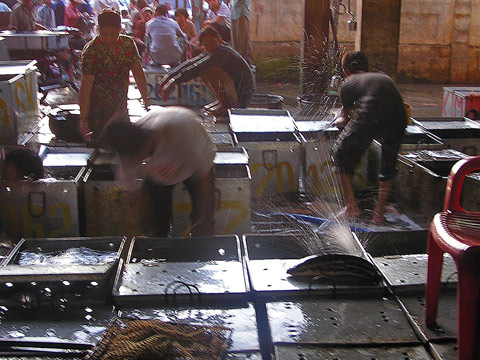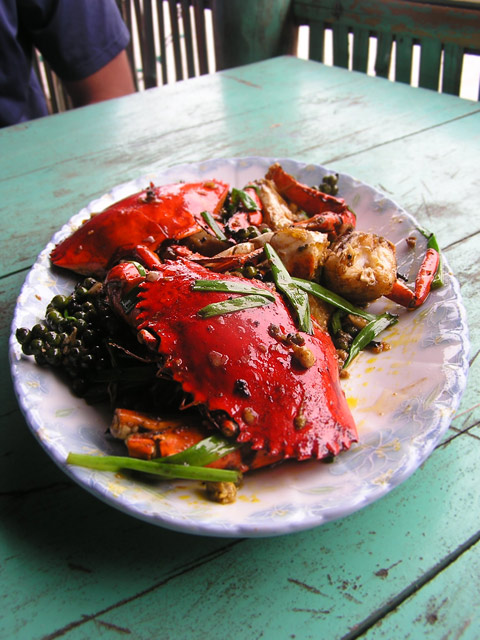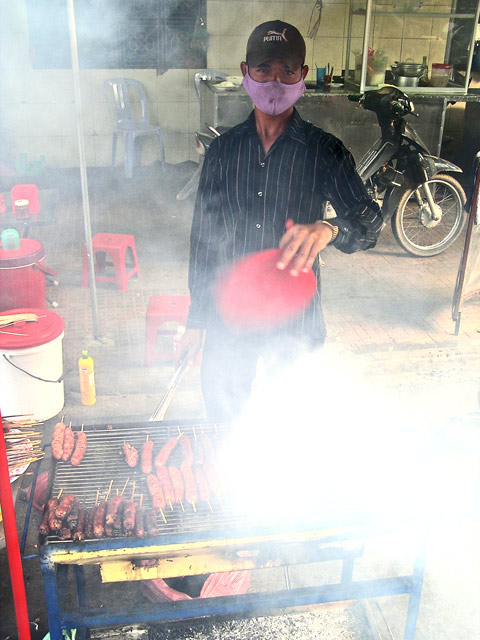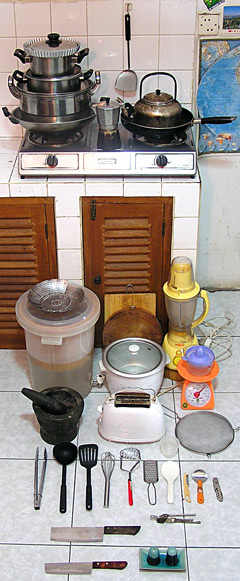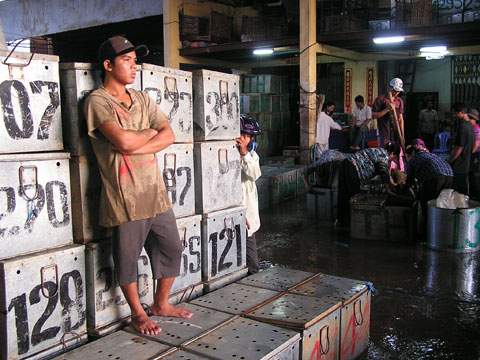
Watching the fish circus at Chbbar Ampouv
Unless you happen to work at Cambodia’s Ministry of Fish, it’s unlikely that you’ll ever hear about Chbar Ampouv. If you eat fish in Phnom Penh, you will have certainly eaten something that has changed hands there, most likely, trei ros.
The ubiquitous snakehead fish arrives at the Chbbar Ampouv landing point packed live in thin metal boxes, baskets, and tarpaulin-lined Toyota Camrys literally filled to the roof with flapping farmed fish. The modified Camrys drive straight into the unloading point; open the doors and a wave of fish slops out onto the concrete to be sorted into boxes of living and dead by the waiting attendants. A tango of weighing, tallying, repacking and on-selling ensues. The thousands of tons of snakehead that change hands at Chbbar Ampouv dock every year are redistributed by truck and motorcycle to Phnom Penh’s more consumer-oriented markets and a few cases make it across the street to the neighbouring bulk market.
Snakeheads are the perfect fish for Cambodia. They eat anything, grow quickly and can survive out of water for hours thus guaranteeing freshness in even the worst Cambodian transport and market conditions (Coincidentally, these are the same qualities that make them the scourge of fisheries elsewhere in the world). For eating, they’re a firm-fleshed fish. In Cambodian food, they tend to turn up in soups; fried whole with a sauce; or as dried fillets, both sweet and salty.
Location: The Chbbar Ampouv landing point is just south of the Monivong bridge in Phnom Penh, starts at dawn, and apart from the boxes of fish there is not much else to see. The opposite market (Psar Chbbar Ampouv) is one of Phnom Penh’s larger wet markets.
